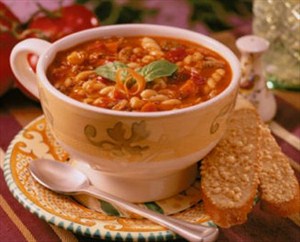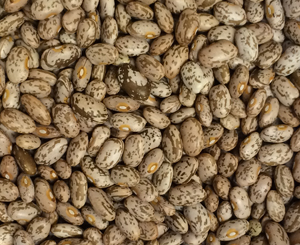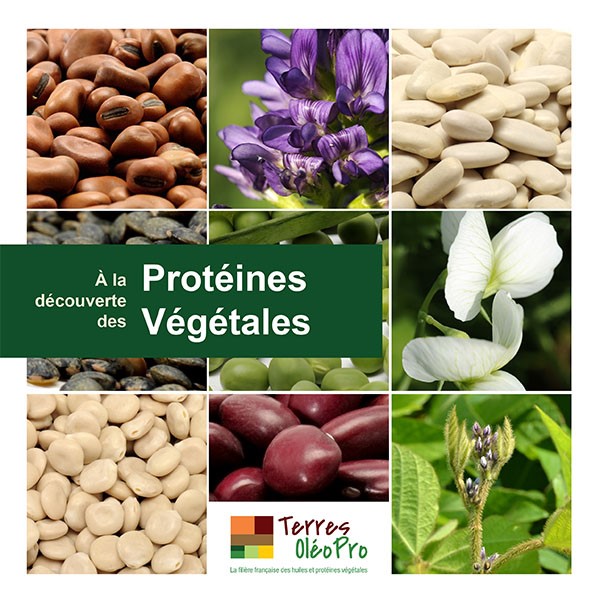- Details
 Almeirim is a small town in Portugal famous for its good melon, wine, tomatoes, and the famous soup…of stones. Although there are many variations of the recipe, this soup is still prepared in this town in Portugal not only by the local people, but also by restaurants, who consume a total of 12,000 kilograms of beans per month.
Almeirim is a small town in Portugal famous for its good melon, wine, tomatoes, and the famous soup…of stones. Although there are many variations of the recipe, this soup is still prepared in this town in Portugal not only by the local people, but also by restaurants, who consume a total of 12,000 kilograms of beans per month.
But don’t be fooled by the name, this soup does not consist of stones nor will it leave stones in your kidneys. The name of the soup actually comes from the legend behind it.
Once upon a time in Portugal, there was a very poor friar who was embarrassed of asking for food or money. Clever he was, and with a stone in his pocket he knocked in some villager’s door saying “Hello good fellow, I have a magical stone that can make the most delicious soup ever tasted, would you like to try it?”. The skeptical villager was about to close the door in his face, but was also curious about the stone. The friar offered to cook the soup and to give him a taste of it if he had access to the kitchen. Despite thinking that the friar was a bit nuts, the villager lent him a pot, water and a ladle.
The villager stood close to the friar waiting to see some magic, while the friar began to ask for some ingredients: “My dear fellow, this soup could use some vegetables, do you happen to have a carrot, some potatoes, onion and celery?” to which the villager replied, “well of course, we grow our own vegetables here, let me get you some”. The friar added the vegetables and asked again, “well this is almost ready, we just need some meat and beans, if you have that, then the soup will be perfect”. The proud villager replied, “No worries father, of course we have that in the house!” The friar continued stirring the soup and the villager stood next to him more curious than ever. Finally the friar said “Is almost done, but we need some salt, pepper and perhaps some fresh herbs, you don’t happen to have some, do you”. The villager who was getting very impatient went to get the requested ingredients.
After the friar added the meat and beans and let it simmer for a couple of minutes, the friar tasted the soup and finally declared “The stone has done its magic! This soup is the most delicious ever tasted! Please try it!” The villager took a big spoon and was very pleased with it, so much so that he asked the friar to sell him the stone. The friar declined and continued his pilgrimage with the stone in his pocket, knocking on others people’s door, ready to prepare them the “Magic Stone” soup.
Get ready for the Portuguese International Year of Pulses 2016 signature dish! Run to the nearest garden, park, or beach and get a stone…the recipe will be coming soon on November 10, with the launch of Pulses.org on November 10th.
- Details
Participants are invited to prepare and submit abstracts of papers for presentation during oral and poster sessions in the joint PanAfrican Grain Legume and World Cowpea Conference. Papers should focus on innovative research, technology/knowledge dissemination and/or private sector business development activities relative to grain legumes (pulses) important to Africa, including cowpea, common bean, pigeon pea, chickpea, fava bean, lima bea, lentil, etc. Since the conference will be focusing on multidisciplinary themes, scientists and development professionals representing diverse disciplines are encouraged to submit papers for presentation.
Topical Categories for Papers
- Abiotic Stress
- Biological Nitrogen Fixation
- Economics and Value Chain Development
- Gender and Youth
- Human Nutrition and Health
- Integrated Pest Management
- Mechanization of Production and Postharvest Handling
- Plant Pathology
- Seed Systems
- Sustainable Intensification
- Technology Dissemination and Impact Assessment
- Value Addition and Food Processing
The conference is organized by the International Institute of Tropical Agriculture (IITA) and the Feed the Future Innovation Lab for Collaborative Research on Grain Legumes (Legume Innovation Lab), in partnership with the Pan-African Bean Research Alliance (PABRA), the International Center for Tropical Agriculture (CIAT), the Centre for Coordination of Agricultural Research and Development for Southern Africa (CCARDESA), the International Center for Research in the Semi-Arid Tropics (ICRISAT), the CGIAR Research Program on Grain Legumes, the Zambia Ministry of Agriculture and Livestock, and the Zambia Agriculture Research Institute (ZARI).
Visit the conference website for more information.
Follow news on Twitter (#Legumes4Africa, #IYP2016) and the Legume Innovation Lab Facebook page.
Important Dates
- Registration Deadline: February 13, 2016 (December 31, 2015, for reduced rate)
- Call for Abstracts
- Abstract Submission(s) Deadline: December 1, 2015
- CSSA Travel Scholarships for Graduate Students: Deadline Oct 22, 2015
- Travel Awards: Visit the conference website and Legume Innovation Lab website.
Additional Co-hosting Programs and Institutions
- ICARDA
- Tropical Legumes III
- N2Africa (Wageningen University)
- Crop Science Society of America (CSSA)
- Feed the Future: The U.S. Government's Global Hunger and Food Security Initiative
- Details
Chalo wants to put beans on the Belgian map. For this, the start-up seeks the help of Antwerp cooks who want to serve something other than a typical salad. During the Table of Tomorrow, the Chalo cooks will create refreshing dishes with beans, lentils and quinoa.
Commercial manager Gita Van den Boer: "If you order a steak in a restaurant, nine chances out of 10 you’ll end up with a salad, carrots, tomato and mayonnaise. You will almost always find French fries and potato croquettes on the menu. We want to inspire cooks to get started with alternative, healthy ingredients such as beans, lentils and quinoa. Or even less-known ingredients such as cañihua, part of the same family as quinoa, and amaranth. "
"Legumes are cheap and super healthy. They are full of iron and protein. However, they are still unknown and unloved in Belgium. Many people do not know it and think it's boring. A package of lentils or beans in the supermarket does not look inspiring. That's why we want to at the people at the Table of Tomorrow to be introduced to new and delicious recipes. Think of exciting combinations with superfoods. These are food products with a very high nutritional value, such as mulberries and chia seeds. "
"Our idea is to give a workshop for Antwerp cooks. We are already in discussions with chefs from famous Antwerp restaurants, but the names remain a secret. During the Table of Tomorrow we hope to get in touch with many more chefs and restaurant owners to hear from them on whether or not they have a workshop and where they need interest, what they want to change. Are you an entrepreneur, or do you know someone in the kitchen that could use some inspiration can use? Then come to our stand."
More info
Starting day for Tomorrow's Table:
Saturday, October 17th, 13 to 17:30
Den Bell, Francis Welles Plein 1
Free
Register here
- Details
The International Center for Tropical Agriculture (CIAT) has reported a new drought-resilient white bean – most commonly used to make baked beans – being deployed to Ethiopia, as erratic weather has threatened national production and farmers’ incomes.
Severe drought in Ethiopia, Africa’s largest exporter of the bean used to make baked beans, could hit production for millions who cultivate and rely on income from the bean. The drought – the worst to hit the country’s bean-producing areas in 10 years, researchers report – has cut yields by 30 percent.
Low rainfall at the height of the bean season in the Rift Valley can also reduce bean quality. Combined with other factors influencing the world price – the beans are exported mostly to Europe for canning –farmers are expected to less income and prices have already fallen.
Read the full article on CIATnews.
- Details
September 29, 2015—In the movie “The Martian,” the main character, astronaut Mark Watney (played by Matt Damon), is stranded on Mars and must rely on his own super-science knowledge to survive. Because the crew had packed some potatoes for a Thanksgiving celebration, Watney creates a lab “garden” and is able to survive off the potatoes—after calculating how many calories he would need to survive until a rescue mission could arrive.
 According to plant scientists from the Crop Science Society of America (CSSA), growing potatoes in a lab situation was a very good idea, but bringing along just a few ounces of bean seeds – called Pulses – on the mission would be a better plan to start any emergency garden. “Pulses” is the broad category of edible beans that are a great source of protein and essential minerals. Pinto beans, chickpeas and peas are all examples of Pulses.
According to plant scientists from the Crop Science Society of America (CSSA), growing potatoes in a lab situation was a very good idea, but bringing along just a few ounces of bean seeds – called Pulses – on the mission would be a better plan to start any emergency garden. “Pulses” is the broad category of edible beans that are a great source of protein and essential minerals. Pinto beans, chickpeas and peas are all examples of Pulses.
“Nutritional diversity is key for survival,” says Roch Gaussoin, a professor at University of Nebraska. Watney calculates he may need to live for four years before rescue.
“Spuds are great for calories but it’s hard to beat Pulses for nutritional quality,” says Gaussoin. “Both plants would be easy to carry into space and would require minimal space to grow when compared to many other crops. They are also adaptable to controlled environment production, versus being in the field.” Gaussoin is the current president of CSSA.
“Pinto beans would be the perfect nutritional partner with the movie's potatoes,” says Janice Rueda, a scientist with ADM Edible Bean Specialties. “They're high in both protein and fiber, as well as many important nutrients like potassium, magnesium and iron.”
In addition, “pinto beans would also have a positive impact on the agricultural production in a challenging environment like Mars. Like all Pulse crops, beans fix nitrogen into the soil and require very little water to grow - especially when compared to other protein sources.”
If this sounds a bit too “Jack in the Beanstalk,” consider that every part of the bean plant is edible. According to Mike Grusak, a research plant physiologist with the USDA-ARS and a professor at Baylor College of Medicine, “besides the protein, fiber, and minerals in the seeds, the leaves of bean plants are also edible. The leaves are a source of several essential vitamins, fatty acids, and antioxidants. The antioxidants are important for life under the higher radiation load on Mars, relative to Earth. Even bean pods are edible too, and another source of these nutrients and phytochemicals.” Grusak is president-elect of CSSA.
The UN declared 2016 as the International Year of Pulses (IYP) to bring attention to this important category of food crops. Crop Science Society will begin their celebration of IYP in late December 2015, with more information to follow.
The Crop Science Society of America (CSSA), founded in 1955, is an international scientific society comprised of 6,000+ members with its headquarters in Madison, WI. Members advance the discipline of crop science by acquiring and disseminating information about crop breeding and genetics; crop physiology; crop ecology, management, and quality; seed physiology, production, and technology; turfgrass science; forage and grazinglands; genomics, molecular genetics, and biotechnology; and biomedical and enhanced plants.
CSSA fosters the transfer of knowledge through an array of programs and services, including publications, meetings, career services, and science policy initiatives. For more information, visit www.crops.org
- Details

Principale source de protéines végétales, les légumineuses sont connues depuis la haute Antiquité. Cultivés dans le monde entier, les légumes secs sont récoltés à maturité. Le qualificatif « sec » fait référence à leur grande capacité de conservation par opposition aux légumineuses vertes, récoltées avant maturité, telles que les petits pois et les haricots verts. Grâce à leurs qualités et à leur richesse gustative, elles sont aujourd’hui remises au goût du jour par les gastronomes et les nutritionnistes.
La publication est disponible en français.